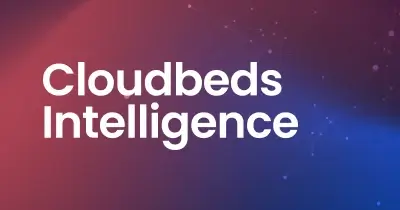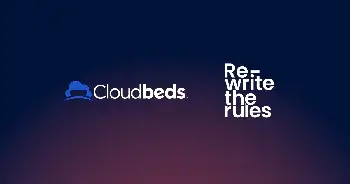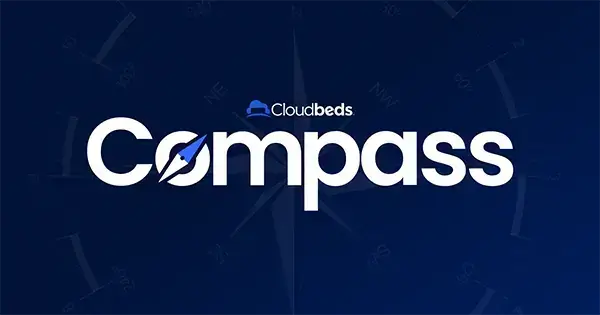
By Ewa Gabara | RoomPriceGenie
Searching for demand patterns for your property is like traveling to the past and then going to the future to forecast how to set up your hotel for success. And no, it’s not a “Back to the Future” movie scene.
Instead of a time machine, you need data on your hotel’s booking performance from your property management system. After reading this article, you will learn how an effective analysis of your property’s booking performance will help you better understand your property’s demand patterns and how to leverage them to maximize revenue and occupancy.
What is booking performance?
Your booking performance tells you how many people are interested in staying at your hotel over a certain period, like a week or month. It shows patterns in when people want to visit based on how many rooms they book.
For example, if lots of people book rooms on weekends but fewer book during the week, it tells you that weekends are your peak days. It also shows what type of guests are staying at your hotel and even what booking channels (direct, online travel agencies (OTAs), etc.) are the most common.
By looking at these patterns, you can:
- Determine your budget
- Create your pricing and inventory strategy,
- Plan maintenance and renovations, schedule team training, vacations, and the list goes on.
In the video below, Paula Carreirão. Partner Marketing specialist at Cloudbeds, and Iara do Carmo, revenue management specialist at RoomPriceGenie, discuss what reservation performance is and its relationship with demand patterns.
Key performance metrics to understand booking performance
To properly analyze your booking performance, you will need to use your property management software or channel manager reports. But to understand and make use of them, you’ll need to know how some of the key metrics, such as booking pace, occupancy rate, and ADR, reflect different aspects of demand patterns.
Let’s quickly explore the meaning behind each of these metrics.
Booking pace tells you how fast people are booking rooms. If lots of rooms are getting booked quickly, that’s a good sign. But if it’s slow, it might mean not many people want to stay.
Occupancy rate indicates the percentage of utilization of hotel rooms.
ADR (Average daily rate) is the calculation of the average price or rate of a hotel room charged for a given period. ADR is often considered the most common indicator of a hotel’s success, especially in relation to competitor hotels with similar demographics.
Revenue Per Available Room (RevPAR) is perhaps the most reliable and common measure of success for a hotel. As opposed to ADR, RevPAR takes into account your occupancy rate. For example, if using ADR as a measure of success, you could simply sell one room a year at $1000, and your ADR would remain $1000, but you have not in fact, been very successful. By calculating your RevPAR and taking into account your occupancy, you are creating a more balanced and truthful display of how well your business is doing.
So, by looking at these numbers together, you can figure out if your hotel is popular, if you’re charging the right prices, and if you’re making enough money from rooms.
Demand patterns: Finding seasonal trends
Seasons play a significant role in shaping booking patterns. During peak seasons, such as summer or major holidays, demand for hotel rooms tends to surge. Conversely, during low periods, like mid-week in the winter, demand tends to taper off. Then there are the shoulder seasons, which fall in between, characterized by fluctuating demand.
But how can you use the knowledge of the seasonal patterns in demand in your lodging business? Here’s the advice from RoomPriceGenie’s revenue management expert, Iara do Carmo:

Next, take a look at the demand for at least the past two years and the next year: when did you have (or are going to have) spikes in demand? What is the cause? (Is it a particular group? Is it an event? Is it a recurring event or a one-time event? Is it a holiday?).
Do the same for the low periods. This way, you will learn when to expect spikes or drops in demand and why.
Check the calendar. Are you going to have the same events and holidays for next year? Do you perform better during the week or on weekends, or is it the same? If so, are you having more weekdays this year than last year?
These small pieces of data can be relevant when building your budget, considering the number of days your performance can be worse or better compared to last year.
On the other hand, during low periods, you will properly price your rooms on a lower level. You will know when to allow offers and different types of customers in your mix. You will be able to plan property maintenance during these low intervals, work on renovation, team training, or your and your staff’s vacations.”
Now, when it comes to maximizing revenue, it’s all about capitalizing on these fluctuations. As Iara already mentioned, they influence your pricing decisions.
During peak seasons, you want to leverage the high demand by adjusting your pricing strategies to capture the most value from each booking. This might mean implementing dynamic pricing or offering attractive packages to capitalize on the heightened interest. On the flip side, during low-demand periods, it’s about filling those occupancy gaps. You might consider offering special promotions or targeted marketing campaigns to attract guests during these quieter times and ensure your rooms aren’t sitting empty.
If you would like to learn more about hotel pricing strategies, check RoomPriceGenie’s Guide for Independent Hotels: Hotel Pricing Strategies.
So, by understanding these seasonal fluctuations and strategically adjusting your pricing and marketing efforts accordingly, you can optimize revenue throughout the year, ensuring your hotel remains profitable even during the slower periods.
Analyze booking patterns across channels
Your booking performance can tell you many (true) stories beyond seasonal patterns in demand. By looking into your property’s data you can find booking patterns and how they vary across different channels.
Direct bookings, those made directly through your hotel’s website, email, or over the phone, often provide valuable insights into your loyal customer base and can be more profitable due to lower commission fees. On the other hand, bookings through OTAs like Booking.com or Expedia offer broader reach and exposure to potential guests who might not have discovered your hotel otherwise.
By comparing booking performance across these channels, you can gain a deeper understanding of your hotel’s demand patterns. For instance, you might notice that direct bookings tend to peak during certain times of the year, while OTAs drive more bookings during others. Understanding these trends can help you tailor your marketing and pricing strategies to each channel accordingly.
Additionally, analyzing your channel mix allows you to assess the overall impact on revenue generation. Are you relying too heavily on OTAs and paying high commission fees? Or are you effectively leveraging direct bookings to maximize profitability?
Knowing these nuances of booking patterns across different channels can help you optimize your distribution strategy to drive revenue growth and improve overall performance.
Recognizing the booking behavior of different guest segments
When you have a clear understanding of who your guest is, thanks to booking performance data, you can understand how booking behavior differs among various guest segments.
Business travelers, for example, often book closer to their arrival dates and are more concerned with convenience and efficiency. Leisure travelers, on the other hand, may book further in advance and prioritize factors like amenities and experiences. Families might have distinct preferences regarding room types and package deals.
By recognizing these differences, you can tailor your pricing and marketing strategies to resonate with each segment. Offering business travelers flexible cancellation policies or discounted corporate rates can incentivize direct bookings, while promoting family-friendly amenities can attract leisure travelers.
Even more, you can use the knowledge of your customers, their booking behavior, and how profitable they are to improve your business strategy. You can decide what customer type is more profitable and limit sales to the ones that don’t bring much value.
Or you can strategically adjust your customer mix. For example:
- By reducing long-stay guests
- By selecting how many corporate guests you would allow during the high-demand days
- By limiting availability on chosen OTAs to have a bigger inventory for direct reservations.
Responding to last-minute changes
Your booking performance includes last-minute cancellations, no-shows, and walk-ins, which can significantly impact hotel revenue and occupancy rates.
With the data available at your property management system you can analyze from which channel you get the most of the cancellations and no-shows. Do you spot any patterns in the type of guests or booking channels?
This can help you decide what you can do to counteract these last-minute changes that often lead to the lost opportunity in selling a room.
Implementing flexible cancellation policies and offering incentives for early bookings can help reduce the likelihood of last-minute cancellations and no-shows.
Another idea to counteract lost revenue due to last-minute cancellations is non-refundable rates. In their case, even if the traveler cancels a reservation, you keep the booking value.
If you already offer non-refundable rates at your hotel, you probably have one or two (or three or more) traveler requests to cancel that type of reservation. While you are in your right not to give back the money, there are still some situations where the traveler is persuasive, so you end up giving it back (to have a piece of mind and/or save your sanity).
But there are ways for hoteliers like you to make even more money from a non-refundable rate AND keep the possible future guest happy: reselling non-refundable reservations back to the hotel.
You can buy it back at a lower cost and resell it at a higher rate. And if a customer knows they can resell their non-refundable booking back to the hotel, it’s more beneficial to them than trying to cancel it or simply not showing up.
Riding the waves of hotel demand
Despite all the data on your property’s performance and knowledge of patterns in demand at your property and local market, there are still unpredictable moments with sudden shifts in demand.
For example, Taylor Swift suddenly revealed her world tour, which resulted in Swifties from all over the world quickly booking hotel rooms near the concert area.
That’s why you should leverage dynamic pricing and revenue management systems that help hotels adapt swiftly to sudden shifts in demand. By continuously monitoring market conditions and guest behavior, you can maximize revenue potential and minimize the impact of last-minute changes on your bottom line.
Leveraging technology for better demand forecasting
All this leads us to technology. Property management systems and revenue management solutions play a crucial role in analyzing booking performance, and predicting future demand trends.
These solutions use advanced algorithms and data analytics to process vast amounts of historical and real-time data, providing you with valuable insights into market dynamics and guest behavior.
Their booking performance reports, hotel analytics, and automation help you optimize pricing strategies, maximize revenue potential, and deliver exceptional guest experiences.
The key to your hotel’s success
Just as Marty McFly and Doc Brown harness the power of time travel for their adventures in “Back to the Future”, you can use the power of data to drive revenue growth and operational efficiency.
By spotting seasonal trends, understanding booking behaviors across different channels and customer segments, and using technology for demand forecasting, you can make better business decisions for your property to maximize revenue potential, improve guest experiences, and thrive in an increasingly competitive market.
So, why not start by diving into your property’s booking data today?
RoomPriceGenie is the easiest way to ensure your rooms are priced right, every night. Purpose-built for the independent hotelier, RoomPriceGenie is fast to implement, intuitive to use, simple to understand, and completely transparent. Choose to be hands-off, letting the platform act as an always-on pricing manager, or jump in and control your price manually. Either way, RoomPriceGenie will save you time checking your rates against your competitive set and ensure you never leave money on the table. In an uncertain world, it’s revenue that you can count on. At Cloudbeds, we’re proud to partner with leading revenue management solutions like RoomPriceGenie to help lodging operators maximize revenue. A post by RoomPriceGenie

















